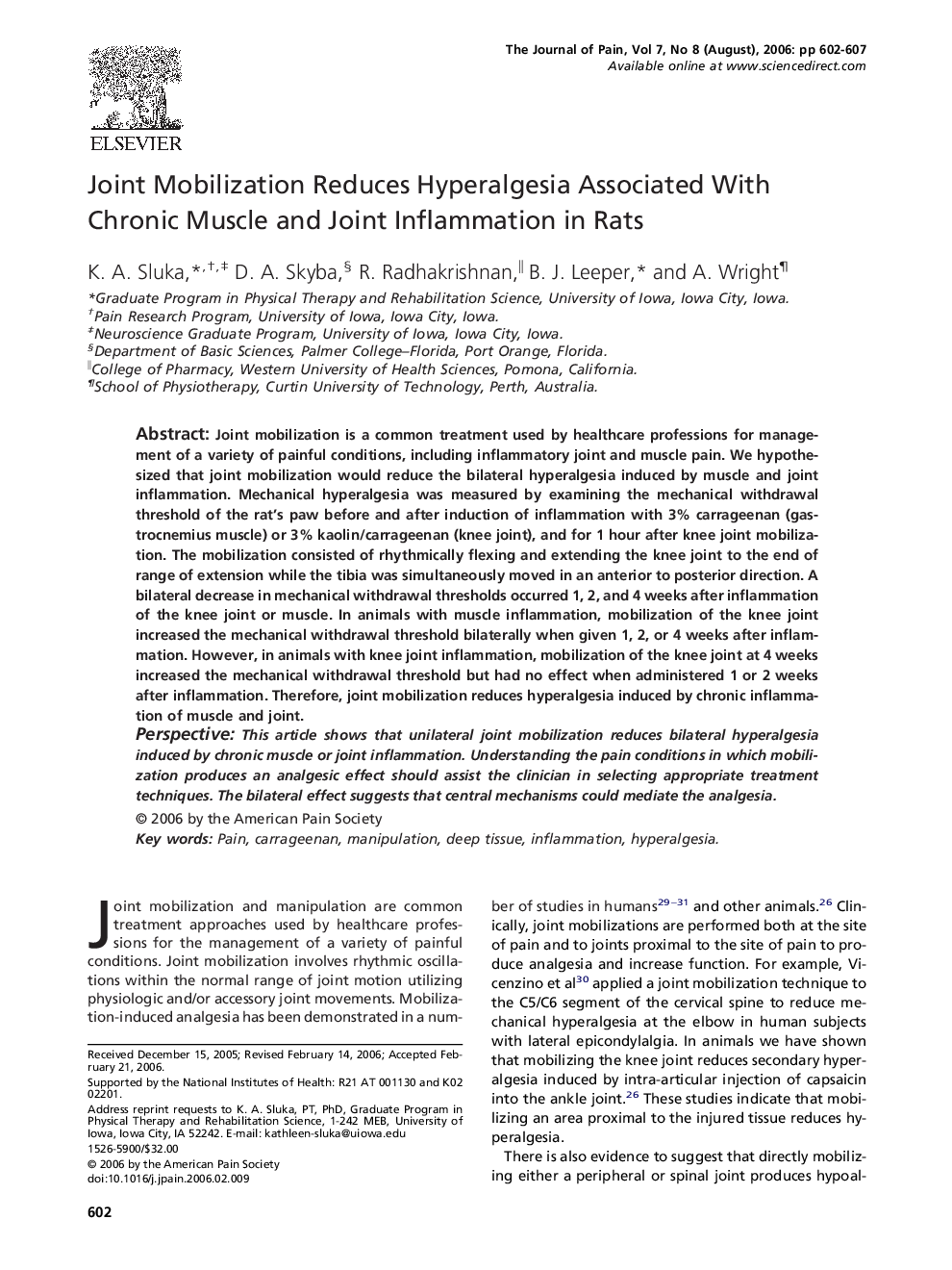| Article ID | Journal | Published Year | Pages | File Type |
|---|---|---|---|---|
| 2729714 | The Journal of Pain | 2006 | 6 Pages |
Joint mobilization is a common treatment used by healthcare professions for management of a variety of painful conditions, including inflammatory joint and muscle pain. We hypothesized that joint mobilization would reduce the bilateral hyperalgesia induced by muscle and joint inflammation. Mechanical hyperalgesia was measured by examining the mechanical withdrawal threshold of the rat’s paw before and after induction of inflammation with 3% carrageenan (gastrocnemius muscle) or 3% kaolin/carrageenan (knee joint), and for 1 hour after knee joint mobilization. The mobilization consisted of rhythmically flexing and extending the knee joint to the end of range of extension while the tibia was simultaneously moved in an anterior to posterior direction. A bilateral decrease in mechanical withdrawal thresholds occurred 1, 2, and 4 weeks after inflammation of the knee joint or muscle. In animals with muscle inflammation, mobilization of the knee joint increased the mechanical withdrawal threshold bilaterally when given 1, 2, or 4 weeks after inflammation. However, in animals with knee joint inflammation, mobilization of the knee joint at 4 weeks increased the mechanical withdrawal threshold but had no effect when administered 1 or 2 weeks after inflammation. Therefore, joint mobilization reduces hyperalgesia induced by chronic inflammation of muscle and joint.PerspectiveThis article shows that unilateral joint mobilization reduces bilateral hyperalgesia induced by chronic muscle or joint inflammation. Understanding the pain conditions in which mobilization produces an analgesic effect should assist the clinician in selecting appropriate treatment techniques. The bilateral effect suggests that central mechanisms could mediate the analgesia.
